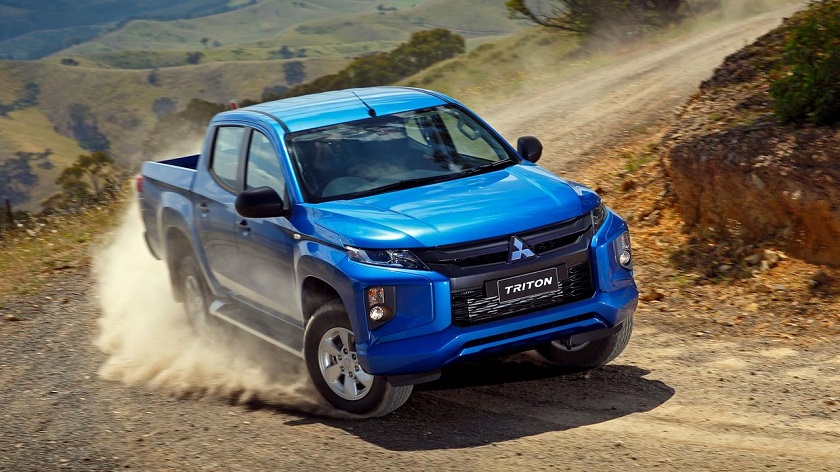
If you’re readying your Mitsubishi Triton for its first off-road adventure, there are quite a few things to pay attention to in order to make sure you make it back unscathed. The Australian off-roads can be dangerous and unforgiving, especially if you venture far from the urban jungle. Animals, flying debris, rocks, and high vegetation are just some of the things you may come across when travelling away from the pavement. That being said, there are a few ways to modify your Mitsubishi Triton in order to ensure it stays protected when off-roading.
Mitsubishi Triton Bull Bar
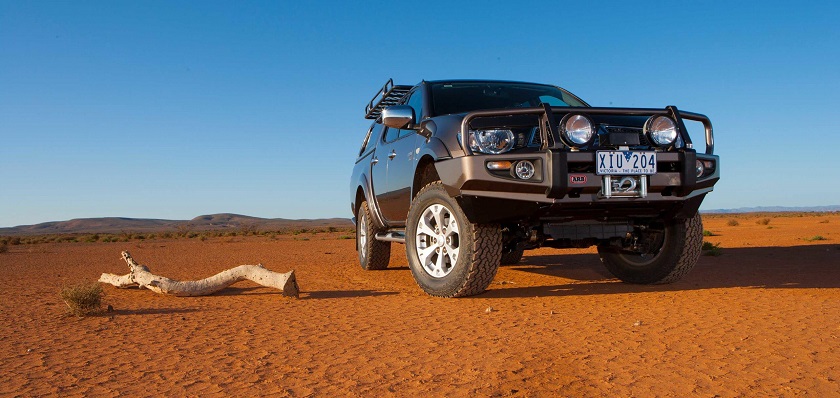
The bull bar is considered the king of 4×4 protective accessories. It’s a metal piece attached to the front of the vehicle, protecting all of its vitals. Bull bars come in a wide range of shapes and forms, and can be made from a variety of materials. The most popular materials for manufacturing bull bars are steel and aluminium.
Both materials provide excellent protection, with steel being a slightly stronger option. However, steel is also heavier, adding more to your vehicle’s GVM. Aluminium, on the other hand, while not as strong, is relatively lightweight, which is why many off-roaders go for an aluminium Mitsubishi Triton bull bar. This will allow you to attach other protective accessories that will further improve your safety off the beaten trail.
Besides the material they’re made of, other things to consider when buying bull bars are whether or not they’re winch compatible. A winch is an invaluable piece of equipment when travelling the Australian off-roads, as they allow you to get yourself out of any sticky situation. Winches are the most expensive piece of recovery equipment, but they’re the most reliable and easy-to-use.
Additionally, you can mount a flag, UHF, and auxiliary driving lights on the bull bar, all of which can help with safety and convenience. Making yourself visible in dusty conditions can come a long way in preventing another off-roader from driving into you. A UHF radio will provide you with a signal where you otherwise won’t have one.
Side Steps
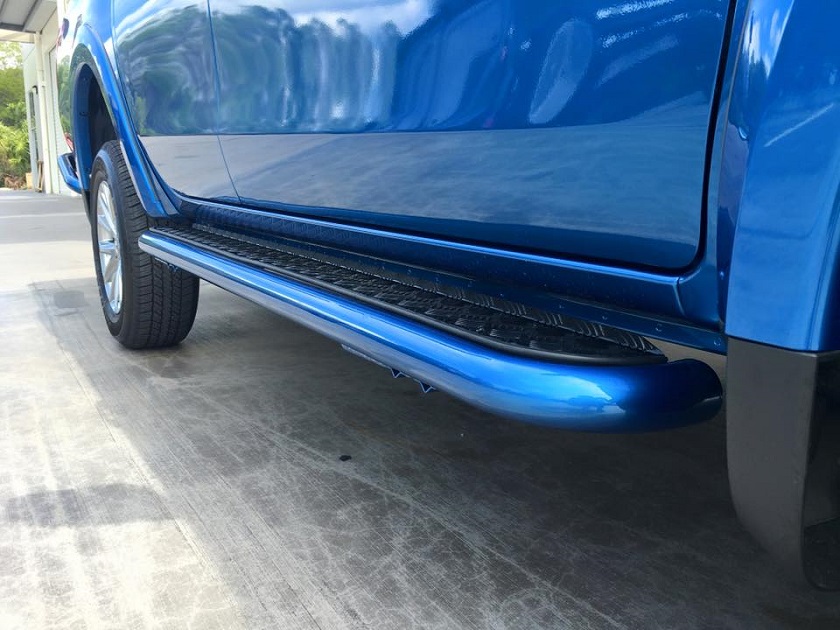
Just like bull bars protect the front-end of your vehicle, side steps protect its sides. When driving over rough terrain, all sorts of debris come flying from under your tyres, exposing your doors to damage. Side steps safeguard your doors, preventing serious damage. On top of this, side steps make it easier to step in and out of your vehicle by serving as an extra step. This can be especially beneficial if you travel with children or pets. Side steps generally come with a rubber surface that provides extra grip, making them non-slip.
Just like bull bars, side steps can be made using aluminium or steel. The same benefits apply – with steel being stronger but aluminium being lighter.
Bonnet Protector and Widow Visors
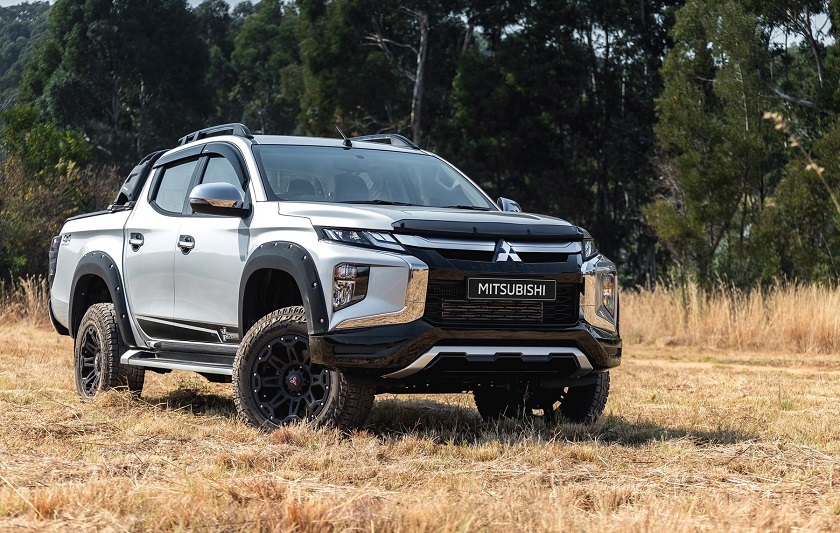
Window visors, just as their name implies, are installed on the windows. Also known as deflectors, they allow you to drive with the windows open, protecting your interior from bugs and debris. Additionally, they protect against the sun, allowing you to drive without straining your eyes. Additionally, since you’ll be enjoying the outdoor breeze, you won’t have to turn on your air conditioning, saving you fuel.
There are two types of visors – in-channel and externally-mounted visors. Visors are generally made using acrylic plastic, and they’re generally tinted to reduce glare. Both in-channel and externally mounted visors are easy to install, using adhesive tape. In-channel visors use double adhesive, whereas externally-mounted visors use a strong single-sided adhesive.
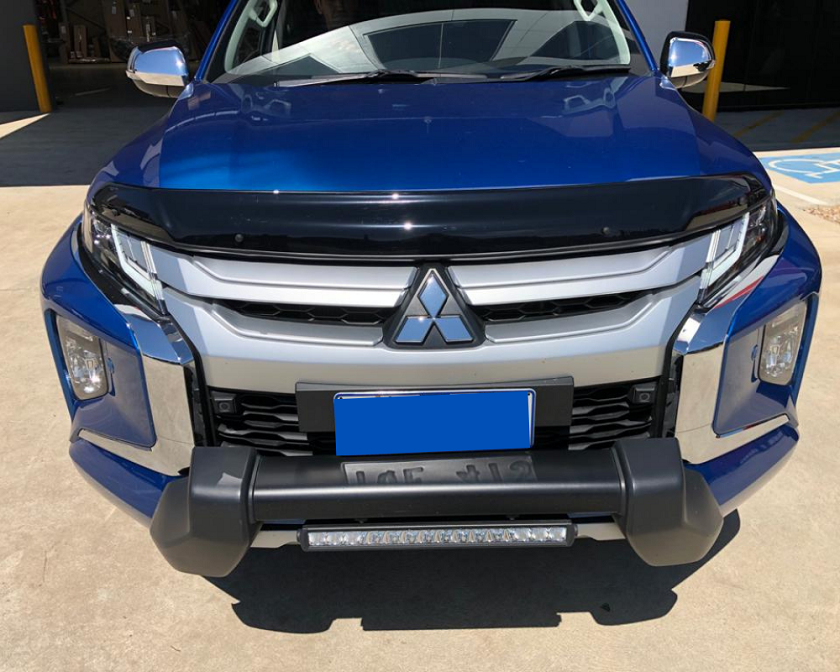
Bonnet protectors come in a wide range of shapes and forms, but they all play the same role – protect your bonnet against upcoming debris and bugs. These accessories not only offer protection, but they improve your vehicle’s aerodynamic profile. There are two popular types of bonnet protectors – standard-profile and low-profile, and they can be either bolted on or taped onto your bonnet.
Low-profile protectors are positioned closer to the bonnet and are also called off-the-hood protectors. They match the contours of your Mitsubishi and they don’t look like an aftermarket modification. On the downside, they’re more susceptible to scratches. Some models come with bump-up ridges to improve airflow.
Standard-profile protectors are positioned at a specific angle so that they don’t impact your vehicle’s aerodynamic approach. They’re positioned away from the bonnet panel, making them ideal for sustaining damage from stones, chirps and other debris.
Bolt-on protectors are attached to the bonnet using bolts or screws. Installing them requires basic tools and a simple installation. The bonnet protector will typically have holes and a bracket that you’ll need to put under the bonnet. These protectors are shaved with a sleeve that should go under the bonnet
Tape-on protectors come with double-sided tape to fix them into place. The tape is strong and durable, and many people choose these protectors because they don’t require any drilling and you can install them even if there are irregularities. For a snug fit, make sure you buy bonnet protectors made for your specific model and make of Mitsubishi Triton.



Comments are closed.